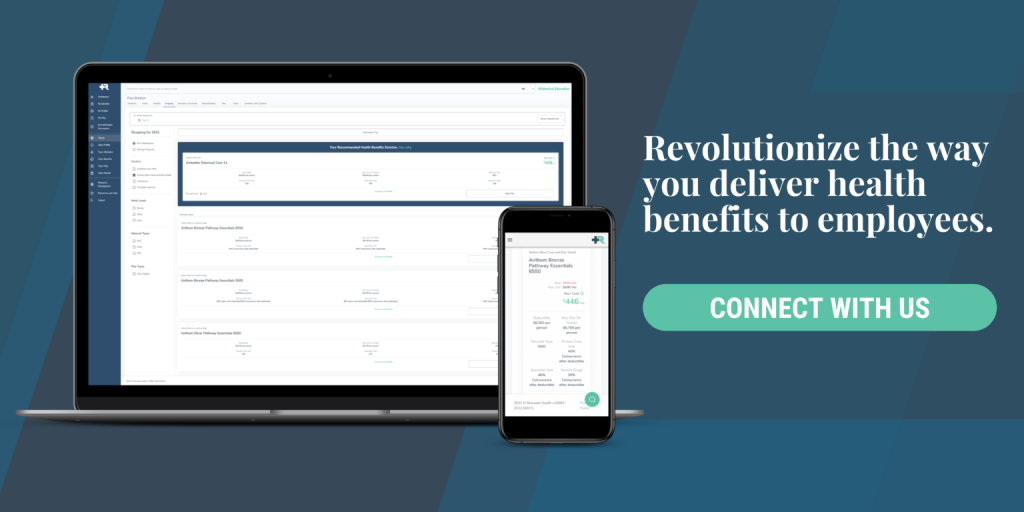Individual Coverage HRAs just became available in 2020. This innovative health benefits solution is projected to help 800,000 employers and 11 million employees throughout the next 3 years.
Here is an intro to ICHRA (pronounced “ick-ruh”):
What’s ICHRA and who can use it?
1. Employers of any size can use ICHRA
2. ICHRA fulfills the large employer mandate
3. Reimbursements can be used for medical expenses and premiums
4. Unlimited reimbursement amounts
5. Employees can be organized into groups with custom allowance amounts
6. Allowances do not offset premium tax credits
How did we get here?
HRAs (Health Reimbursement Arrangements) started in 1974 with the ERISA Act, aiming to slow down rising medical costs. The new law allowed employers to offer employees tax-free reimbursements for healthcare expenses.
Unfortunately, it did not succeed in stopping the ever-increasing price of healthcare.
By the time the 2000s arrived, the IRS offered some updates that gave HRAs an opportunity to shine. The changes offered improved flexibility for employers to determine different reimbursement amounts for different employees all across their organization. Those funds could then be used toward both medical expenses and premiums.
The problem was, while the updates let employers budget better, they did not improve the access and affordability of healthcare for employees. Thus, the Affordable Care Act (ACA) was introduced in 2013.
This, however, was not good news for the HRA.
The ACA brought new definitions and requirements to health insurance plans. HRAs actually fell under this new definition of a “plan” and became subject to the requirement of providing Essential Health Benefits as well as having no Lifetime Limit.
HRAs were then considered incompliant unless “integrated” with a fully-insured ACA-compliant group plan.
So what changed?
While the ACA did improve access to medical coverage through the Individual Marketplace, its disruption to the industry made costs for group healthcare go up even more — especially for companies with under 50 employees.
In an effort to give employers an alternative to cancelling plans they could no longer afford, Congress enacted the 21st Century Cures Act in 2016, which included the provision for Qualified Small Employer HRAs (QSEHRA). It allowed small employers to offer dollars to their employees to spend on individual plans.
However, the strict limits on employer size and reimbursement amounts significantly limited QSEHRA’s application pool. Large employers could not use QSEHRA, the allowances were too small, and offering it offset premium tax credits for employees.
In an effort to appeal to these problems, the Trump Administration released an Executive Order in mid-2019 outlining new rules for HRAs. The goal was to increase flexibility for both employers and employees to better utilize the Individual Marketplace. Starting in 2020, Individual Coverage HRAs (ICHRA) have been made available.

But aren’t individual plans bad?
It is a common misconception that individual plans are inherently bad — largely due to their clunky rollout. Right from the start, no one knew if the Individual Marketplace was actually going to work. In response, some major carriers dropped out shortly after launch.
However, many big names are getting back in the race. Anthem continues to expand their individual products, and UHC has developed plans that will reenter the Individual Marketplace in 2021.
The price of individual products are continuing to remain much more stable than their group counterparts. Individual insurance companies have increased in value by 500% since the ACA launched. 78% of these carriers say expanding choices and coverage aligns with their mission. All these factors combined greatly benefit consumers.
In 2020, the national average increase for individual products was 0%.
Does it always work?
ICHRA is certainly the most significant update to health insurance since the ACA. But, it’s still not the best fit for every group. Other innovative solutions, such as the wage increase model, have also been extremely successful in helping employers cut costs while still taking care of their employees.

Important Notice: Remodel Health does not intend to provide specific insurance, legal, or tax advice. Remodel Health always recommends to consult with your own professional representation to properly evaluate the information presented and its appropriate application to your particular situation.
